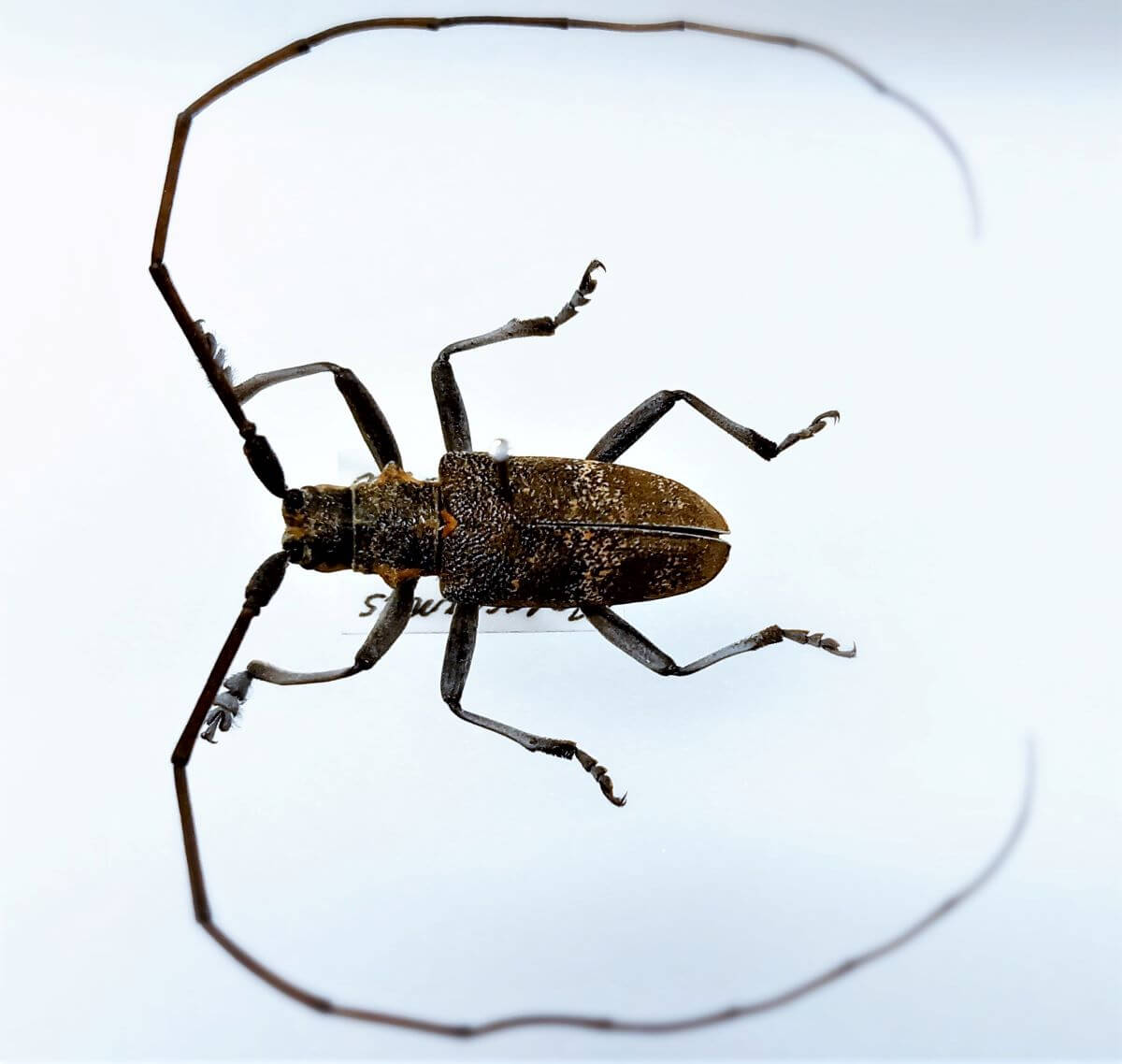Reassessing the threat posed by pine wood nematode to UK forestry
Project leads Dr Sarah Facey | Forest Research; Talor Whitham | PhD Student, Forest Research and University of Reading
Collaborators Dr James Ryalls, Dr Robbie Girling | University of Reading; Dr Thomas Prior, Dr Bex Lawson | FERA; Dr Luís Bonifácio, Dr Maria Lurdes Inácio | INIAV, Portugal
Context
Pine wilt disease (PWD) is a lethal wilting disease recognised as one of the most serious threats to conifer forestry worldwide. The disease is caused by the pine wood nematode (PWN) (Bursaphelenchus xylophilus), which travels between trees on the bodies of Cerambycidae monochamus beetles. PWN enter trees through beetle feeding wounds and egg notches, grow inside the trees and gather on developing beetles inside the wood, before the beetle emerges and travels to feed and mate, spreading the nematode further.
PWN has been intercepted on infested packaging material coming through UK ports and processors and could arrive in the UK. The UK has no indigenous Monochamus species, however, PWN is known to have formed new associations with native Monochamus beetles in countries outside of its native North American range. Other beetles in the UK display similar life history behaviours to Monochamus beetles and there is concern that they could act as alternative vectors for PWN. This is a horizon scanning PhD project that seeks to inform future forestry about the risks posed if PWN arrives in the UK.
Research aims and objectives
Aim
The project examines the relationship between Monochamus and PWN and assess the risk of UK longhorn and bark beetles as potential vectors of PWN.
Objectives:
- Survey UK pine wood samples and associated beetles to assess the native nematode species present in the environment currently.
- Characterise and compare the volatile organic cuticular compounds (VOCCs) to those found in Monochamus.
- Perform experiments exposing PWN to a range of UK beetle cuticular extractions, both with and without the co-presence of Monochamus extractions to assess nematode responses to chemical cues.
- Draw up actionable recommendations for PWN.
Expected outcomes
- Peer reviewed journal articles.
- Recommendations for policies regarding PWN in the UK.

Pine wood nematode (PWN) under a microscope.
Glossary & Key Terms
Cerambycidae Monochamus beetles
A genus of longhorn beetles within the family Cerambycidae, known for their role as vectors of the pinewood nematode (Bursaphelenchus xylophilus), the causal agent of Pine Wilt Disease (PWD).
Cuticular extractions
Pine wilt disease (PWD)
Pine wood nematode (Bursaphelenchus xylophilus)
A microscopic roundworm, scientifically named Bursaphelenchus xylophilus, that causes Pine Wilt Disease (PWD). It is a pathogenic organism that infects conifer trees, particularly pines, by entering through wounds created by Monochamus beetles during feeding or egg-laying. Once inside the tree, the nematode multiplies rapidly, disrupting water transport and leading to tree wilting and death. PWN also uses beetles as vectors, hitching rides on their bodies to spread from one tree to another, continuing the disease cycle. For more information, see Pine wood nematode (Bursaphelenchus xylophilus) – Forest Research.
Vector
Volatile Organic Cuticular Compounds (VOCCs)
Share this project on social media
Related Projects
Our Partners
Social media
Explore
Newsletter
Contact
© 2022 Centre for Forest Protection. All rights reserved.


